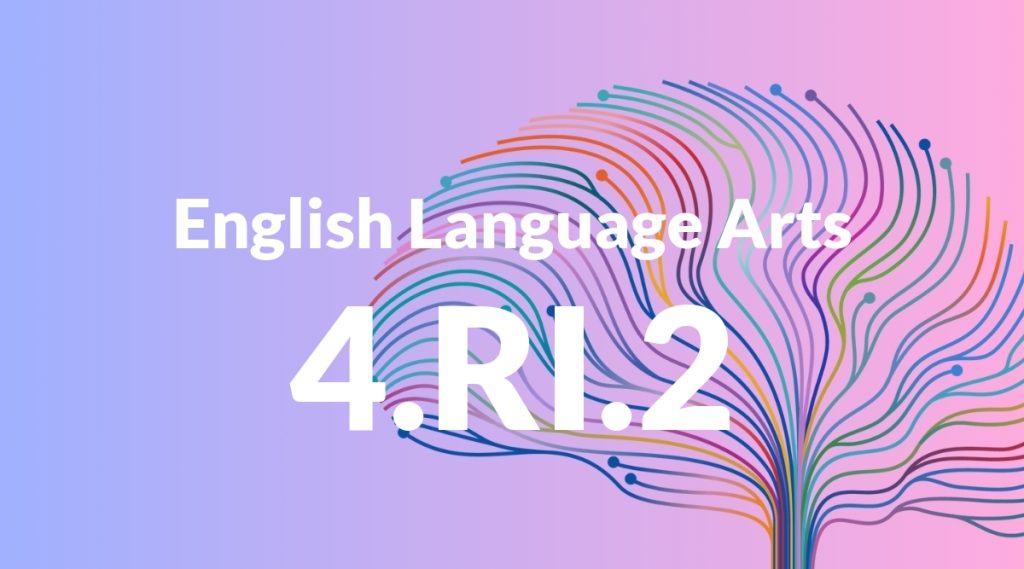Standard: 4.RI.2 – Determine the main idea of a text and explain how it is supported by key details; summarize the text.
Grade level: Grade 4
Subject: English Language Arts
Domain: Reading: Informational Text
Teacher Overview
This standard focuses on helping students determine the main idea of an informational text and explain how it is supported by key details. It is essential because it builds critical reading skills that are foundational for understanding and analyzing complex texts in higher grades. Students should have a basic understanding of identifying key details in a text and summarizing simple passages.
After mastering this standard, students will be able to analyze more complex texts and synthesize information from multiple sources, which is crucial for success in higher grades and across subjects.
Common Misconception 1
A common misconception is that the main idea is the same as the topic. This is incorrect because the topic is what the text is about, while the main idea is what the author wants to convey about that topic.
Intervention 1
Use explicit teaching and modeling to show the difference between the topic and the main idea. Provide practice with identifying both in various texts.
Common Misconception 2
Another misconception is that all details in the text are equally important in supporting the main idea. This is incorrect because only certain key details directly support the main idea, while others are less relevant.
Intervention 2
Use graphic organizers to help students visually map out the main idea and its supporting details. Encourage students to ask themselves how each detail supports the main idea.
Prerequisite Knowledge
Students should understand how to identify key details in a text and have basic summarization skills.
Subsequent Knowledge
Students will develop the ability to analyze more complex texts and synthesize information from multiple sources.
Instructional Activities
- Read a short informational text and identify the main idea and key details.
- Use graphic organizers to map out the main idea and supporting details.
- Summarize a text in a few sentences, focusing on the main idea and key details.
- Compare and contrast the main ideas of two different texts on the same topic.




